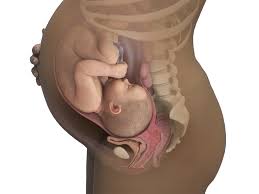
Being pregnant and carrying a pregnancy isn’t an easy task, but how difficult is it?
A recent study by evolutionary biologist Dustin Marshall and his team offers new information about the energy requirements of human pregnancy.
Before, scientists believed that most energy for reproduction was stored in the fetus. This new research, published in the Journal of Science, reveals a surprising fact: the energy in the human baby's tissues accounts for only about 4% of the total energy costs of pregnancy, with the other 96% coming from the woman's own body.
How much strength do you need to carry a baby for 9 months?
A pregnant woman needs a requirement of more than 50,000 dietary calories over nine months, roughly equivalent to 50 pints of Ben and Jerry’s Cherry Garcia ice cream. This just shows that the energy requirement is enormous.
It takes a lot of work to burn 50,000 calories, it is equivalent to lifting an incredible 666,666.67 kg in total. To put things in context, that's more weight than a herd of one hundred cows.
Say that you are performing weightlifting exercises with a repetition count of 68 kg on average. An estimated 9,804 repetitions would be required to burn 50,000 calories.
Compared to other animals, humans are one of the species that spend the highest amount of joules (the basic unit for measuring energy) on having children.

ALSO READ: Never do these 5 things to your pregnant wife
Biologists studied the energy cost of reproduction across 81 animal species with diverse strategies. Large mammals, like humans, give birth to a few well-developed offspring after a long pregnancy and also spend time taking care of the baby. While, ectotherms, like reptiles, lay many eggs with minimal investment.
No matter the reproduction strategy in animals, it has a double cost: the energy stored in the offspring and the energy the parent uses to produce them.
This research result reveals what we already knew: a lot of energy demands are placed on a pregnant woman's body.
Read Full Story














Facebook
Twitter
Pinterest
Instagram
Google+
YouTube
LinkedIn
RSS